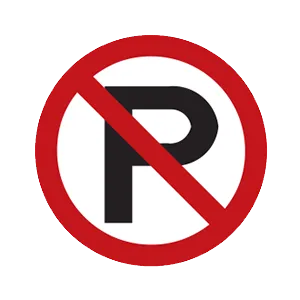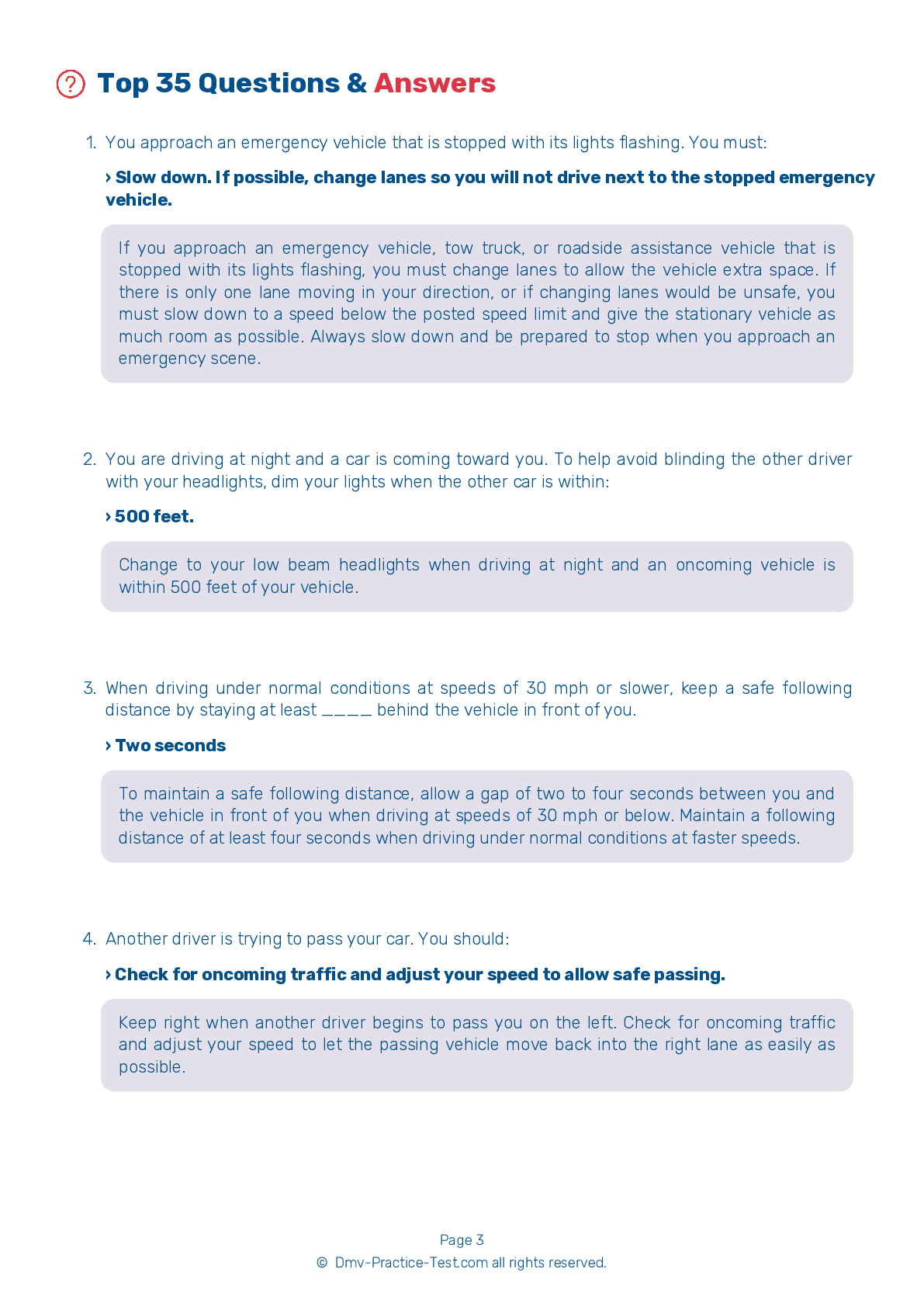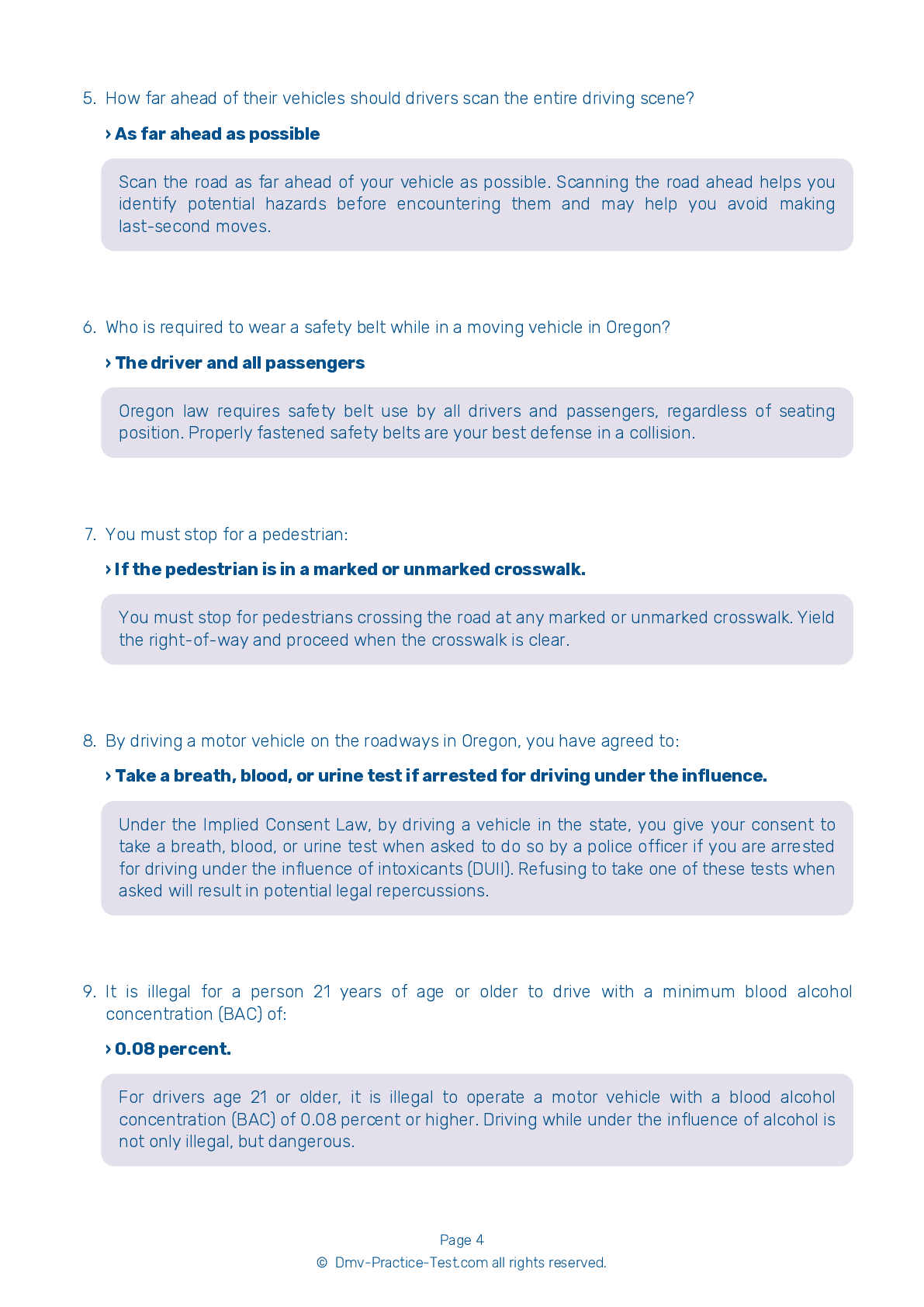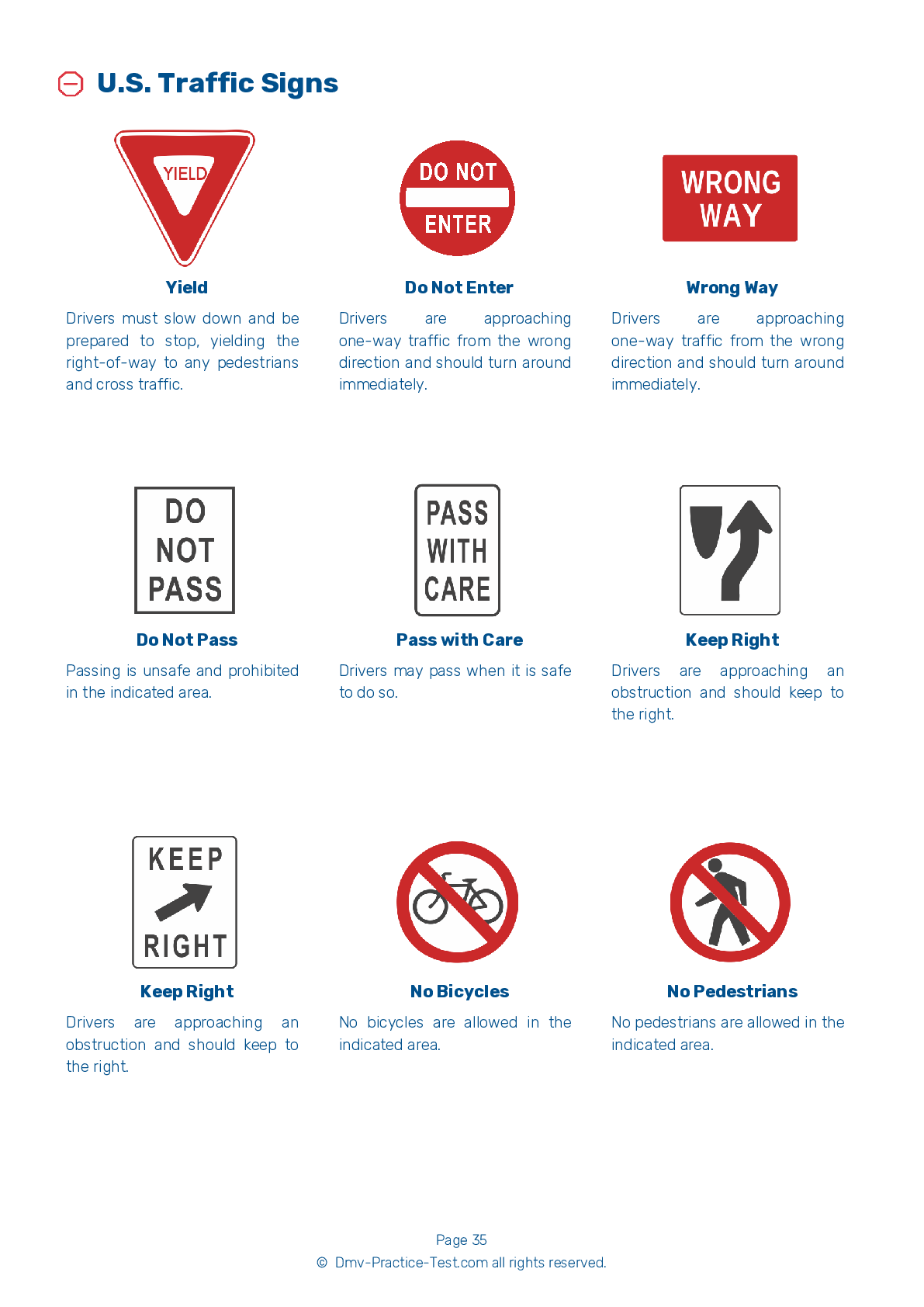FREE Oregon DMV Practice Test #4 Page 5 of 5
The practise exams for the Oregon DMV have been updated for January 2025. It includes questions based on the most important traffic signals and regulations for 2025 from the Oregon Driver Handbook. To study for the DMV driving permit test and driver's licence exam, use actual questions that are very similar (often identical!) to the DMV driving permit test and driver's licence exam.
Each question on the practise exam has a tip and explanation to help you recall the ideas. Questions about traffic rules, traffic signs, and driving statutes, as well as knowledge from the Driver Handbook, will be included in the written portion of the official Oregon DMV test.
You must properly answer 28 of the 35 questions to receive a passing mark. Use the Oregon Department of Motor Vehicles' practise exam to help you prepare for your instruction permit or driver's licence.
The DMV exam is offered in a variety of languages.
Using any form of testing help will result in an automatic fail, and the DMV may take further action against your driver's licence, so avoid it.
29 . Fog can greatly reduce the visibility of other vehicles, pedestrians, and traffic signals. When driving in fog, you should:
Fog can greatly reduce your ability to see other vehicles, pedestrians, and traffic signals. When driving in fog, drive cautiously and at reduced speeds. Do not use high beam headlights. Low beams better illuminate the road and objects ahead in foggy conditions.
30 . It is important to be alert to motorcycles because:
Motorcycles are smaller and harder to see than cars. Because of their size, they are easily hidden in a car’s blind spot. It may be difficult to judge your distance to a motorcycle and difficult to tell how fast a motorcycle is moving, so always be alert and extra cautious when near a motorcyclist.
31 . You are driving when it starts to sleet or snow. You should:
In snowy weather, keep your windshield and mirrors clear. Increase your following distance when driving in wet and cold weather because a slippery road surface will increase the distance needed for your vehicle to stop.
32 . Do not pass:
You should never pass if there is an oncoming vehicle in the passing lane, if your view is blocked by a curve or hill, at an intersection, before or on a railroad crossing or bridge, or in any other no passing zone. Unless you are on the opposite side of a multilane roadway with a median or shared center turn lane, you may not pass a stopped school bus that has its flashing red lights activated.
33 . If you become stranded in a snowstorm, the best thing to do is to:
If you become stranded in a snowstorm, the best thing to do is stay in your car and wait for help. You are most likely to be found if you don't leave your vehicle. Additionally, it may be unsafe to walk around outside in a snowstorm.
34 . An approaching driver fails to dim their high beam headlights. Where should you look?
If an approaching driver fails to dim their high beams, glance toward the right side of the road. This will keep you from being blinded by the other vehicle’s headlights and will allow you to see enough of the road to stay on course until the other vehicle has passed.
35 . This sign means:

Regulation signs regulate traffic speed and movement, displaying rules which drivers must obey. This regulation sign indicates that parking is not permitted.
See the exact questions that will be on the 2025 Oregon DMV exam.
99.2% of people who use the cheat sheet pass the FIRST TIME
LT gives us an insight on how the cheat sheet provided her with all the study questions she needed before taking her test.
Joe initially studied with the handbook and failed his test, he eventually found us online, studied and pass his test the first time around.



